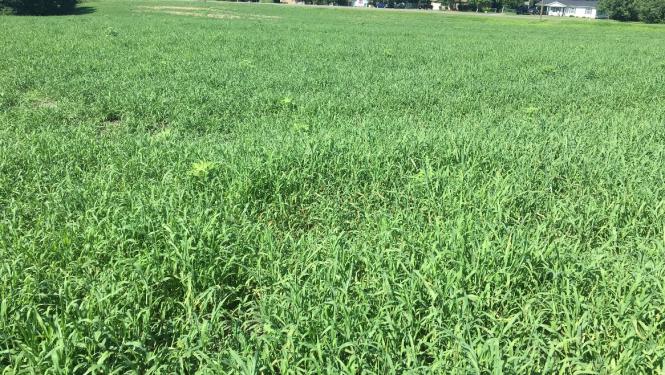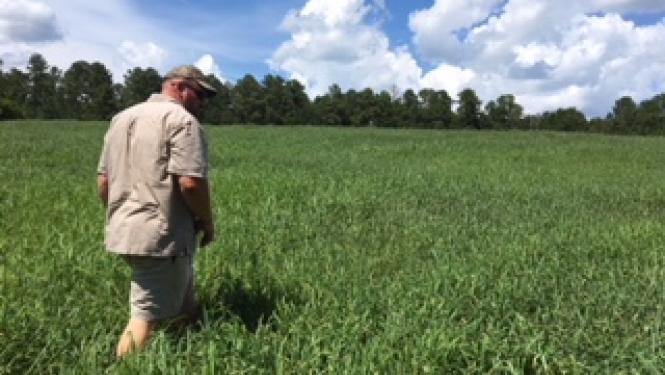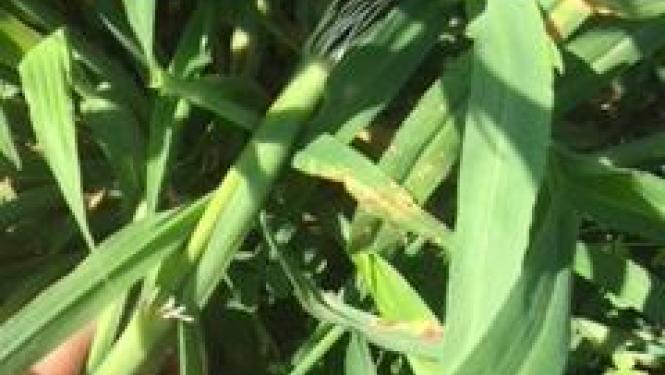
If you have ever been in the row crop or bermudagrass hay business, the name “crabgrass” makes you cringe. This prolific summer annual grass has been rampant across the Southeast for years, showing itself in corn and soybean fields and filling in between fescue and bermudagrass plants in pastures. Its capacity to reseed, “crawl”, survive through drought, and its adaptation to many soil types puts it on the list as the ultimate weed. However, it is for all these reasons and more that you should consider sowing crabgrass as a forage on your farm.
In my work throughout the Southeast, I have heard producers say more than once “crabgrass saved me during the drought” and “I didn’t sow it, but the cows love it.” There is a big chance that native crabgrass has already become a pivotal part of your grazing system. It is one of the only summer annuals that is competitive enough to be productive in thinning stands of cool season grasses and helps to address the dreaded “summer slump”. An even better solution to this slump may be terminating a poor stand of perennial grasses to keep in an annual rotation. This will help get cattle off of toxic fescue, as well as increase productivity and quality during that summer slump.

So what’s the hype with crabgrass? I see it having two advantages: The first is its ability to reseed. After dropping seed all summer, crabgrass seed just needs to be “awakened” the following spring by dragging or stomping with livestock. The second advantage is the ease of grazing/mowing management. Crabgrass should be grazed at 6-8” height with 2.5-3” of residual, which is much like the grazing patterns of our staple grasses.
We typically don’t think of crabgrass as being a challenge to get established; after all, it’s a weed! Like most small seeded crops, thought, failures can and have happened. Most failures are a result of poor seed to soil contact. Prepared seed beds that have not been properly cultipacked are often too fluffy and won’t provide that seed with enough contact to encourage germination. Broadcasting into an existing stand of grass can work very well, but think about competition. If that established grass is very tall or thick, that leaves very little room for crabgrass seedlings to reach sunlight. You will find most success broadcasting into perennial grass stands that are thinning. In any of these scenarios, dragging or cultipacking will increase the germination of the stand. Some producers have even found success by running the livestock across the field and treading that seed in. Crabgrass is also fairly sensitive to herbicide residual, so check those labels before spraying! Very common herbicides can have planting restrictions you may be unaware of.
Red River Crabgrass has become a favorite forage among livestock producers who are looking for a highly productive, high quality summer annual. In the establishment year, be sure to take the steps necessary to get a good stand and, if reseeding is desired, allow it to drop seed.
